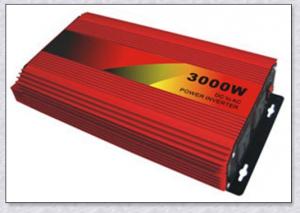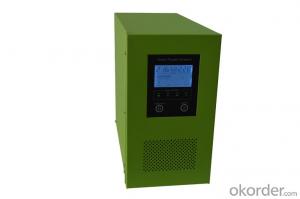Solar Inverter 3000w
Solar Inverter 3000w Related Searches
Cover For Solar Inverter Wifi For Solar Inverter Canopy For Solar Inverter Ct For Solar Inverter Inverter For Rv Solar Spd For Solar Inverter Solar With Electric Inverter Rv Solar Setup With Inverter High Voltage Solar Inverter Best Solar Inverter In KenyaHot Searches
Type Of Inverter For Solar Types Of Inverter For Solar Used Solar Inverter For Sale Inverter Size For Solar System Solar Edge Inverter For Sale 5kw Solar Inverter For Sale Solar Inverter For Sale Solar Inverter For Battery Solar Inverter For Split Ac Solar Inverter For Laptop Solar Inverter For Fridge Solar With Inverter Price Solar Inverter With 2 Battery Solar Inverter Price In China Best Solar Inverter In China Solar Inverter Price In Dubai Solar Inverter Price In Uae Solar Inverter Price In Kenya Solar Inverter Price In Kerala Type Of Inverter For SolarSolar Inverter 3000w Supplier & Manufacturer from China
Okorder.com is a professional Solar Inverter 3000w supplier & manufacturer, offers integrated one-stop services including real-time quoting and online cargo tracking. We are funded by CNBM Group, a Fortune 500 enterprise and the largest Solar Inverter 3000w firm in China.Hot Products
FAQ
- The role of a solar inverter in voltage control is to convert the direct current (DC) generated by solar panels into alternating current (AC) that is suitable for use in the electrical grid. It also ensures that the voltage output from the solar panels matches the voltage requirements of the grid, thereby maintaining a stable and consistent voltage level. This helps prevent voltage fluctuations and ensures efficient power transmission and distribution.
- The key safety features to look for in a solar inverter include overvoltage protection, ground fault protection, arc fault protection, and rapid shutdown capability. These features help ensure the safe and efficient operation of the solar system, protecting against electrical hazards and reducing the risk of fire or injury.
- The role of a display or user interface in a solar inverter is to provide real-time information and control capabilities to the user. It allows the user to monitor the performance of the solar inverter, such as the amount of power being generated, the voltage and current levels, and any error or warning messages. The display also enables the user to adjust various settings and parameters of the inverter, such as the operating mode, output voltage, or charging profiles. In essence, the display or user interface acts as a communication tool between the user and the solar inverter, facilitating efficient operation, monitoring, and troubleshooting.
- A solar inverter handles islanding detection by constantly monitoring the grid voltage and frequency. If the solar inverter detects a deviation from the normal grid parameters, it will automatically disconnect from the grid to prevent islanding.
- The operating temperature range of a solar inverter typically varies, but it is commonly between -20°C to 60°C.
- When choosing the right output voltage for a solar inverter, several factors should be considered. Firstly, it is essential to match the inverter's output voltage with the electrical system or grid requirements of your location. This typically involves understanding the voltage and frequency standards set by the utility company or relevant regulatory body. Additionally, the output voltage should align with the capacity and specifications of the solar panels or array being used. The inverter must be able to handle the maximum voltage and current produced by the solar panels to optimize power generation. Furthermore, the load requirements of the electrical devices or appliances that will connect to the inverter should be taken into account. It is crucial to ensure that the inverter's output voltage is compatible with the voltage needs of the equipment, avoiding any potential damage or inefficiencies. Overall, selecting the appropriate output voltage for a solar inverter involves considering the electrical system standards, solar array specifications, and load requirements to attain optimal performance and compatibility.
- Yes, a solar inverter can be used in areas with limited roof space or installation options. Solar inverters are typically compact and can be installed in various locations, such as the ground, walls, or even inside the house. In addition, there are different types of solar inverters available, including microinverters and power optimizers, which allow for more flexibility in system design and installation. These options can help maximize the use of available space and provide more installation options for areas with limited roof space.
- The typical efficiency ranges for different types of solar inverters can vary depending on factors such as the technology used, the quality of the inverter, and the specific application. However, in general, string inverters typically have efficiency ranges of around 95% to 98%, while microinverters can achieve efficiencies ranging from 95% to 99%. On the other hand, central inverters, which are commonly used in large-scale solar installations, often have efficiency ranges of 97% to 99%. It's important to note that these are average ranges, and actual efficiency can vary depending on various factors and specific product specifications.







































